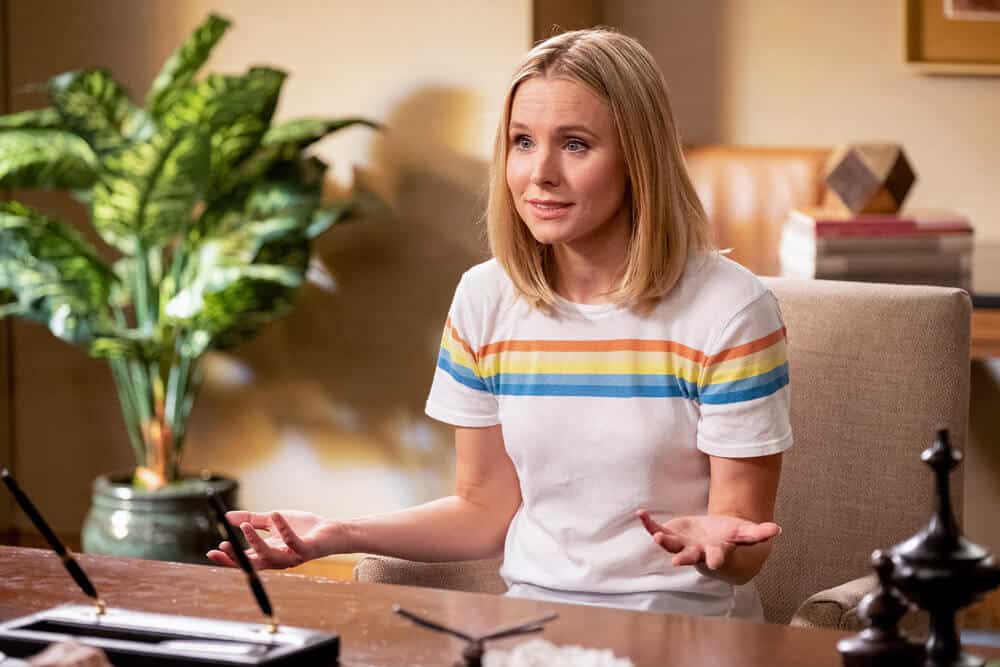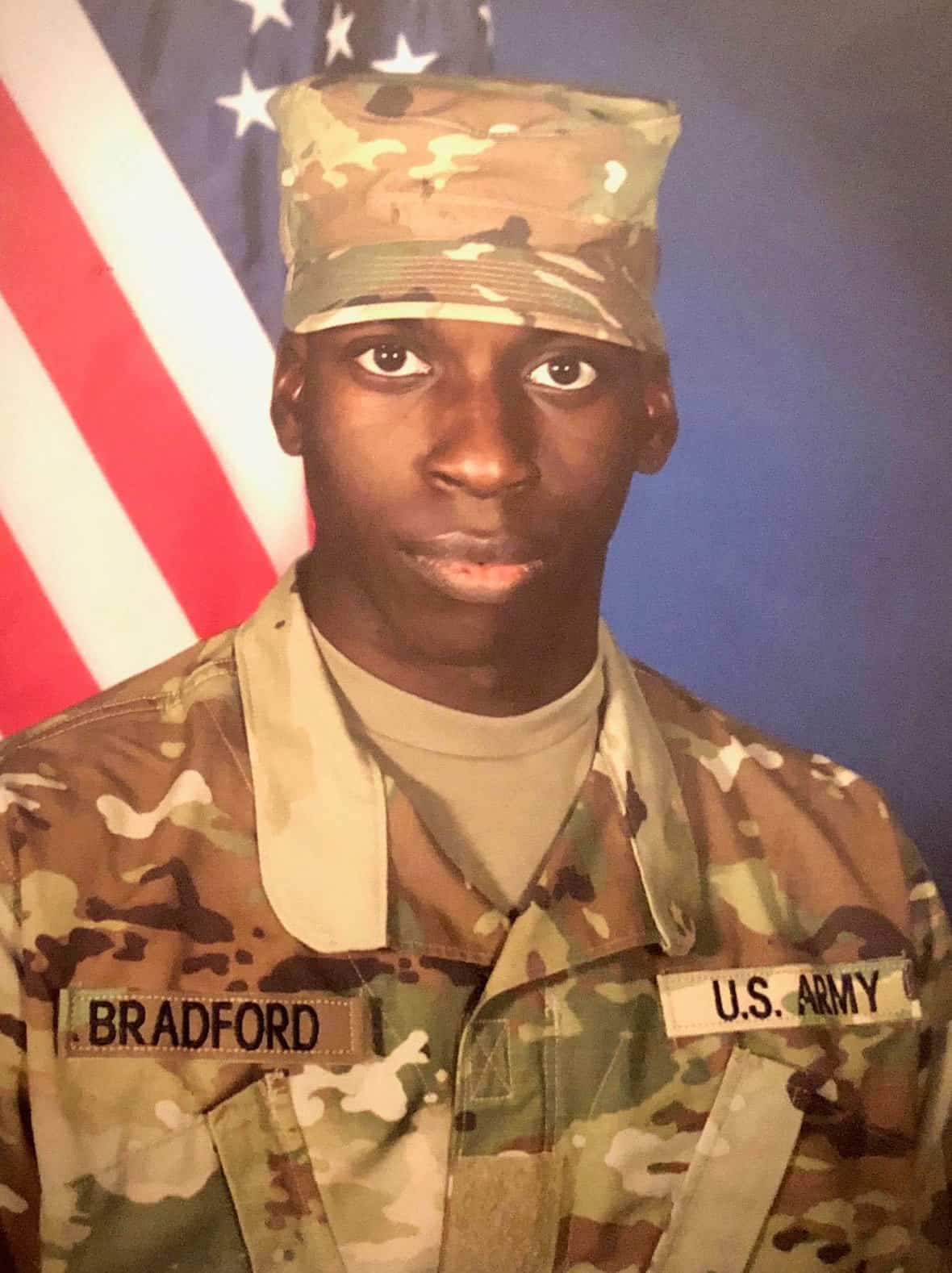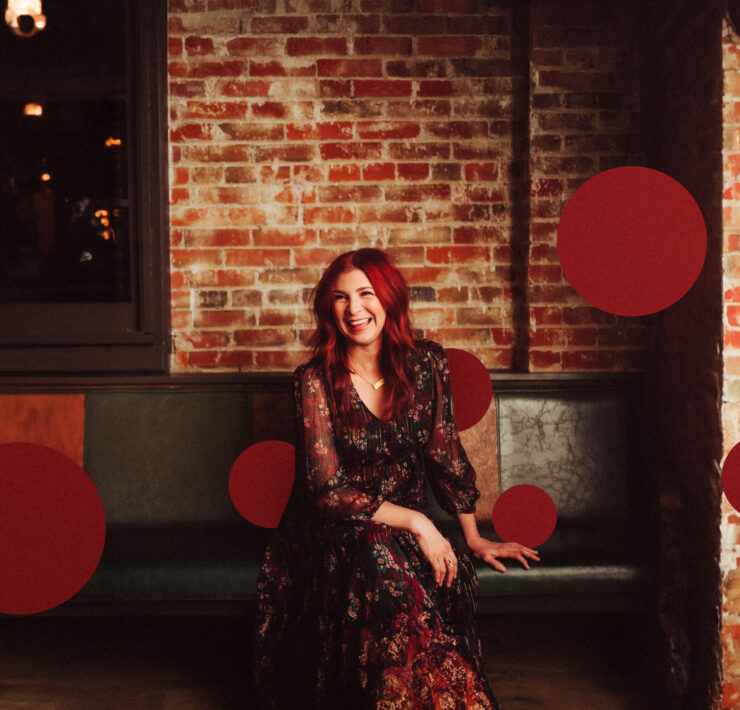
There is perhaps no show on TV more personally involving than The Good Place. NBC’s comedy is a philosophical theme park ride—fun first and foremost, but operating on a foundation of questions that fuel and substantiate the laughs. The show’s investigation of the meaning of life is akin to a gummy vitamin: It’s good for you, but it’s shaped like a Flintstone and it tastes like a Starburst. You’d pop them by the handful.
More amazing still, The Good Place has sustained itself on those questions for three seasons, evolving its line of moral inquiry and expanding its point of view until it’s addressed “goodness” on physical, motivational, emotional and pseudo-spiritual levels. It started by asking if bad people could become good people, and by what standard that should be measured, but what about demons? Can they be good? Can a robot (who’s not a robot, of course, but still)?
These exercises have been on TV before, but more often in drama than comedy, and never this well within comedy. Westworld asks what it means to be human, but it has no heart. Game of Thrones interrogates our definitions of good and evil, but it’s more interested in violent spectacle than productive dialogue. Meanwhile, The Good Place begins its frank, often literal philosophy discussions with a punch line and ends them with a cliffhanger. This class is fun, and as the viewer/student, the casual vibe invites you to participate.
Positioning the viewer as “one of the gang” alongside Eleanor, Chidi, Tahani, Jason, Janet and Michael is essential to the The Good Place’s success, but it’s a major storytelling risk. When viewers are put alongside characters, that alignment has to be maintained in order to deliver maximum satisfaction. When things become dis-aligned, the tension between viewer and story is obvious, and that’s when people pull back.
But on The Good Place, that risky construct paid off again and again and again across dozens of episodes. The characters evolved from trash magnets to endearing, admirable friends while the show’s deep moral investigations churned through gallons of story, piling the twists high atop the show’s self-serve cup of frozen yogurt. It was a treat, indeed.
Yet, it couldn’t last. On The Good Place’s season three finale, its thematic and creative ambitions either exceeded its grasp or came up short, depending on your point of view. The show stumbled. The Good Place placed a wayward topping on an otherwise delicious sundae, trying to serve an answer to its questions and potentially spoiling the whole creation.
Consider other shows that align viewers with characters trying to answer questions or solve mysteries. The two most notable examples come from TV show-runner Damon Lindelof: Lost and The Leftovers.
Lost is one of the most significant television dramas of the 21st century, but it’s remembered most for its unsatisfactory ending. For five seasons, Lost communicated to its viewership that its end goal was solving the mystery of the island. In its most misguided story moments, that solution became the motivation of the characters and, so, the motivation of the viewers. When Lost course-corrected in its final season and attempted to reclaim its story by prioritizing the character’s emotional journey above the mystery, most viewers felt betrayed. Lost’s mysteries made it a phenomenon, but urging fans to participate in the mystery proved its undoing.
By contrast, The Leftovers is TV’s best example of a successful alignment between viewers and questioning characters. The strategy here differed from Lost in that The Leftovers never promised, either in presentation or plot, answers to anything. The goal of the show or its characters wasn’t to explain the Departure or learn any sort of secret. Instead, The Leftovers wanted its characters to accept what they didn’t know enough to reach emotional fulfillment. As its title sequence says: “Let the mystery be.”
On The Good Place, the motivations of Eleanor, Chidi, Michael and the rest of the gang straddle the best of The Leftovers and the worst of Lost. On one hand, The Good Place’s characters have clear, well-drawn emotional journeys. They’re learning how to become better people and they undergo a terrific amount of believable, impactful change. On the other hand, those changes arrive via questions that, in this story, require answers, because those answers close the emotional arc of the characters. If the thrust of The Good Place is to watch people ask, “How do you become a good person and how do you know you’ve succeeded?” in order to become good themselves, it follows that the question needs an answer for the transformation to take place. Ultimate payoff on The Good Place, then, comes when both the mystery and the emotional journey reach their conclusion, ideally at the same time.
So for The Good Place to offer an answer before that conclusion is a bold play. Until now, the show’s just been a happy romp through existentialism and nihilism and intuitionism and contractualism, but on the final episode of the third season, The Good Place took its first shot at a thesis statement. [*spoilers ahead*]
In the finale, “Pandemonium,” the gang hatched a plan to prove their own self-betterment by teaching other humans to be good as they taught themselves. However, their experiment is compromised when Chidi’s ex-girlfriends appears as a participant, so to save the results and ensure his friends still have a shot at the Good Place, Chidi decides to have his and his ex’s memories wiped. One catch: In doing so, Chidi will forget his relationship with Eleanor, too.
After the erasure, Eleanor sits heartbroken with Janet. In a fit of spite and anger, she asks the all-knowing robot (not a robot, but still):
“What’s the point of love if it’s just going to disappear, and how is it worse to not love anybody? There has to be meaning to existence, otherwise the universe is just made of pain, and I don’t like the thought of that.”
Janet’s response:
“If there were an answer to how the universe works, it wouldn’t be special. It would just be machinery filling its cosmic design. But since nothing seems to make sense, when you find something or someone that does, it’s euphoria. In all this randomness, this pandemonium, you and Chidi found each other and you had a life together. Isn’t that remarkable?”
Eleanor ends the scene, and the season, with: “I guess all I can do is embrace the pandemonium. Find happiness in the unique insanity of being here now.”
It might not make logical sense to love amid a world of suffering and loss, but being good means choosing to love anyway. It’s a beautiful, worthwhile philosophy, but its pronouncement comes with a potential disruption in that viewer/character alignment The Good Place worked so hard to cultivate. By making an instructive statement in relation to its questions, The Good Place becomes a tiny bit less inclusive.
Anyone who believes anything can find solidarity with someone struggling with the unknown, but when a show issues a prescription in how to treat its unknowns, that solidarity disappears because—and this is an odd thought—the unknown looks different to everybody.
It was possible for a viewer to bring faith into a decidedly unaffiliated show like The Good Place because when the characters struggled with general moral ideas like legalism and contractualism, it rubbed against Christian ideas like grace, works and Biblical progressivism. In the past two decades, deconstruction has become an integral part of the modern Christian life, and the notion of a Christ follower who claims to know everything about the universe isn’t just theologically troublesome, it’s dated. The modern Christian doubts, and that’s not controversial. It’s healthy.
Yet the unknowns of the Christian faith look different than the unknowns of the Jewish faith or the unknowns of an atheist, and these unknowns are specific. Christians will always struggle to understand (in full) things like transubstantiation, the intimacy of the Trinity and what heaven and hell are like, for example. Working backwards, these specific unknowns, and those of every other belief system, inspire specific questions: What did Jesus mean by “this is my body?” With that structure in mind, the shortcomings of The Good Place come to light.
The Good Place claims we should love others even in a world so broken it renders love illogical. Again, wonderful, but for people belonging to a system of faith, there are completely logical reasons to love within a broken world. In Christianity, love is actually the response to a broken world. For the Christian to love is not a rebellion against chaos; it’s a restorative choice meant to communicate and further God’s vision for a world in unity with Himself.
Love for Christians is never in isolation, and the same goes for people of many other faiths, because faith contextualizes your actions in things unseen. This dynamic runs counter to the meaningless world of Janet’s answer. For many, love is founded in reason. The Good Place misses that.
For The Good Place, then, to embrace meaninglessness is to affirm its operation upon an agnostic platform. That’s not surprising or even new, and yet, there are some frustrations and—frankly—disappointments with that. For one, the show’s hopeful outlook is blunted when its shown to rest on the individual’s capacity to love rather than anything more assured. For another, The Good Place‘s firm agnosticism eliminates the shared experience that was possible when the show was just asking questions. The Good Place’s answers are not everyone’s answers, and so its characters are moved into a narrower range of empathy than before. Maybe they’re still like us in some ways, but the new deficit is obvious.
That’s the tension of taking values and beliefs into popular culture. When stories put forward their own belief systems, it instigates a collision. This can be a glorious, atom-splitting occasion—Rick and Morty’s thoughtful explorations of the multiverse theory have expanded both its intellectual and emotional grasp—or, as in the case of Lost, a complete catastrophe. The former comes when a show applies its values to itself, and the latter comes when it attempts to extend those values to the audience.
The Good Place hasn’t revealed its intent in that regard, and that’s a key area of potential as it prepares for season four. At this point, the show could go anywhere. This collision between the show’s ideas and the viewer’s ideas could be a creative explosion for what’s already one of the most fast-changing and thrilling comedies on television—a way for The Good Place to push boundaries by setting them—or it could annihilate the inclusivity that made it such a week-in, week-out joy.
So this is not to say The Good Place is crippled from this point forward, or even a worse show. It’s just to say from a certain standpoint, it has a ceiling. The Good Place’s idealism is delightful and its humor is as witty and surprising as anything on TV, but by moving its philosophical endeavors from investigation to self-declaration, the show’s wisdom in regards to human connection has found its limits.
It’s a strange feeling. This is TV’s best image of heaven, and yet for those who believe in such a thing, The Good Place’s vision of the afterlife is now dissonant and foreign. In a sense, the show has performed an extension of its first famous twist: Some of us were never in The Good Place, no matter how much it felt like it, or how much we wanted to be.






















